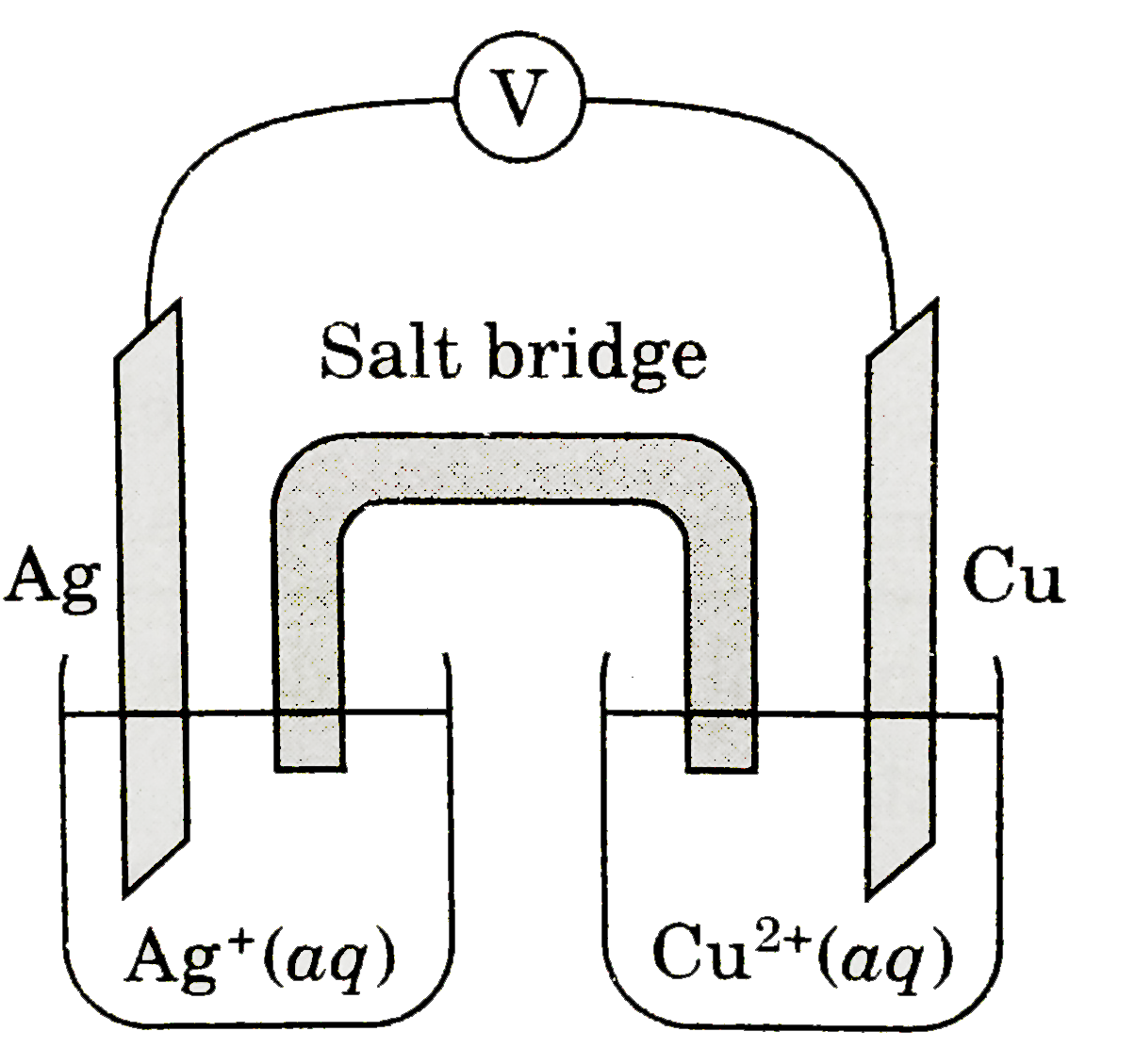For the reduction of ion in an aqueous solution is . Value of for some metal ions are given below
The pair(s) of metal that is/are oxidised by in aqueous solution is(arE):
V and Hg
Hg and Fe
Fe and Au
Fe and V
The correct Answer is:A, B, D
for V, Fe and Hg are lower than that of , so, will oxidise V, Fe and Hg.
Topper's Solved these Questions
- BOOK - OP TANDONCHAPTER - ELECTROCHEMISTRYEXERCISE - Assertion- Reason27videos
ELECTROCHEMISTRY
- BOOK - OP TANDONCHAPTER - ELECTROCHEMISTRYEXERCISE - Matching Type Question11videos
ELECTROCHEMISTRY
- BOOK - OP TANDONCHAPTER - ELECTROCHEMISTRYEXERCISE - OBJECTIVE TYPE QUESTION (LEVEL -B)52videos
ELECTROCHEMISTRY
- BOOK - OP TANDONCHAPTER - COORDINATION COMPOUNDSEXERCISE - SBJECTIVE TYPE96videos
COORDINATION COMPOUNDS
- BOOK - OP TANDONCHAPTER - HALOALKANES AND HALOARENES EXERCISE - Single Interger answer type questions14videos
HALOALKANES AND HALOARENES
Similar Questions
For the reduction of NOc−3 ion in an aqueous solution, Ec− is +0.96V, the values of Ec− for some metal ions are given below :
i.V2+(aq)+2e−→V, Ec−=−1.19V
ii.Fe3+(aq)+3e−→Fe, Ec−=−0.04V
iii.Au3+(aq)+3e−→Au, Ec−=+140V
iv.Hg2+(aq)+2e−→Hg, Ec−=+0.86V
The pair(s) of metals that is / are oxidized by NOc−3 in aqueous solution is / areView SolutionFor the reduction of NOc−3 ion in an aqueous solution, Ec− is +0.96V, the values of Ec− for some metal ions are given below :
i.V2+(aq)+2e−→V, Ec−=−1.19V
ii.Fe3+(aq)+3e−→Fe, Ec−=−0.04V
iii.Au3+(aq)+3e−→Au, Ec−=+140V
iv.Hg2+(aq)+2e−→Hg, Ec−=+0.86V
The pair(s) of metals that is / are oxidized by NOc−3 in aqueous solution is / areView Solution
Knowledge Check
- Question 1 - Select One
For the reduction of NO−3 ion in an aqueous solution E∘ is +0.96V. Values of E∘ for some metal ions are given below V2+(aq)+2e−⇔V,E∘=−1.19Vtt
Fe3+(aq)+3e−→Fe:E∘=−0.04V
Au3+(aq)+3e−→Au,E∘=+1.40V
Hg2+(aq)+3e−→Hg,E∘=+0.86V
The pari(s) of metals that is/are oxidised by NO−3 in aqueous solution is (are)AV and HgBHg and FeCFe and AuDFe and V - Question 2 - Select One or More
For the reduction of NO−3 ion in an aqueous solution, is +0.96V. Values of for some metal ions are given below :
V2+(aq)+2e−→V, E∘=−1.19V
Fe3+(aq)+3e−→Fe , E∘=−0.04V
Au3+(aq)+3e−→Au , E∘=+1.40V
Hg2+(aq)+2e−→Hg , E∘=+0.86V
The pair(s) of metals that is(are) oxidised by NO−3 in aqueous solution is(are) :AV and HgBHg and FeCFe and AuDFe and V - Question 3 - Select One
For the reduction of NO−3 ion in an aqueous solution, is +0.96V. Values of for some metal ions are given below :
V2+(aq)+2e−→V, E∘=−1.19V
Fe3+(aq)+3e−→Fe , E∘=−0.04V
Au3+(aq)+3e−→Au , E∘=+1.40V
Hg2+(aq)+2e−→Hg , E∘=+0.86V
The pair(s) of metals that is(are) oxidised by NO−3 in aqueous solution is(are) :AV and HgBHg and FeCFe and AuDFe and V
Electrode potential data are given below
Fe3+(aq)+e−→Fe2+(aq)E∘=+0.77VAl3+(aq)+3e−→Al(s)E∘=−1.66VBr2(aq)+2e−→Br−(aq)E∘=+1.05V
Based on the given data which statements is/are true?View SolutionAg+(aq)+e−→Ag(s)E∘=0.80V
Cu2+(aq)+2e−→Cu(s)E∘=0.34V

Which increases immediately if the surface area of the silver electrode is increased?View SolutionElectrode potential data are given below:
Fe3+(aq)+e−→Fe2+(aq):E∘=+0.77V
Al3++3e−→Al(s):E∘=−1.66V
Br2(aq)+2e−→2Br−(aq):E∘=+1.08V,
Based on the data, the reducing power of Fe2+ Al and Br− will increase in the orderView SolutionThe standard reduction potentials at 298K for the following half cells are given :
ZN2+(aq)+2e−Zn(s), E∘=−0.762V
Cr3+(aq)+3e−Cr(s), E∘=−0.740V
2H+(aq)+2e−H2(g), E∘=0.000V
Fe3+(aq)+e−Fe2+(aq), E∘=0.770V
which is the strongest reducing agent ?View SolutionThe standard reduction potentials at 298K, for the following half cells are given:
Zn2+(aq)+2e−⇔Zn(s):E∘=−0.762V
Cr3+(aq)+3e−⇔Cr(s):E∘=−0.740V
2H+(aq)+2e−⇔H2(g),E∘=0.000V
Fe3+(aq)+e−⇔Fe2+(aq),E∘=0.770V
Which is the stronget reducing agent?View Solution

